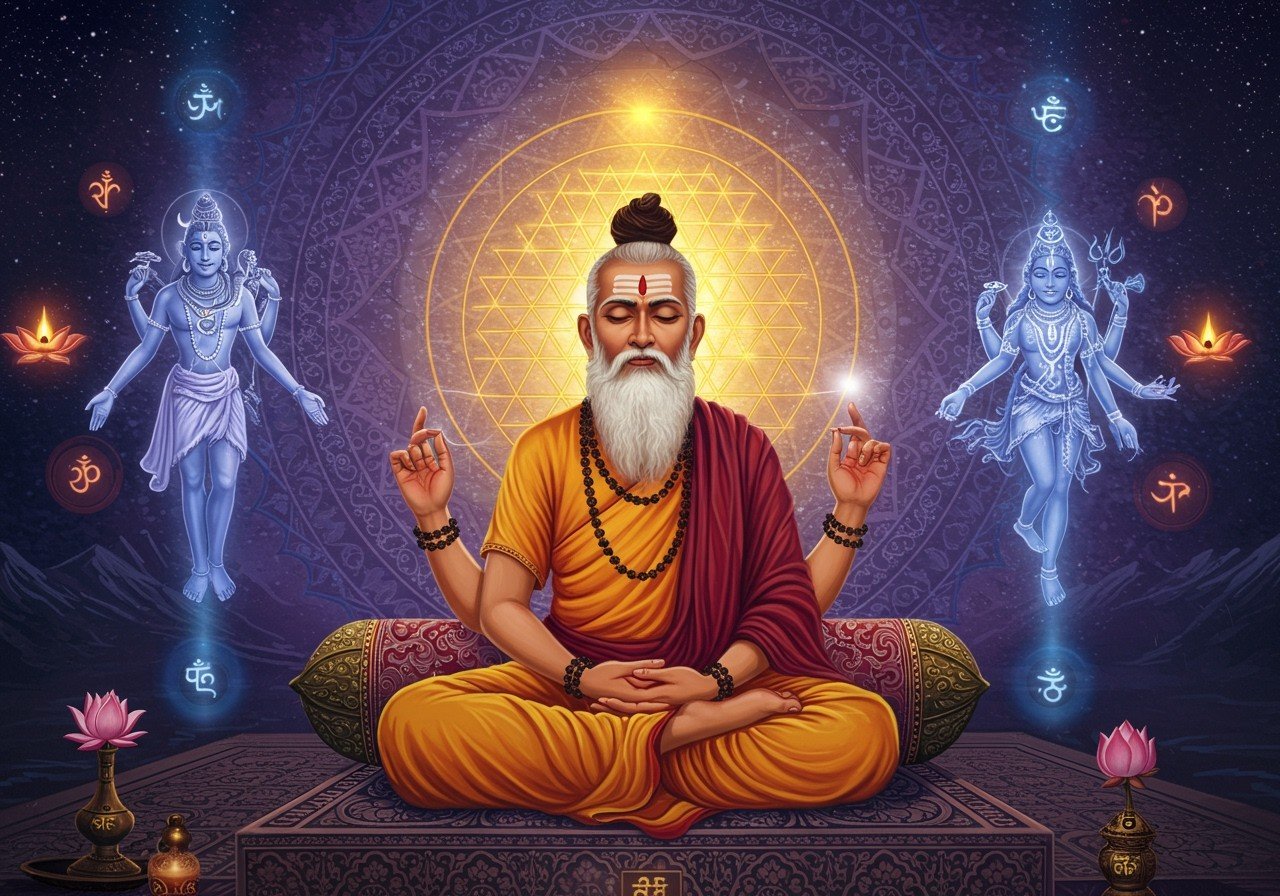Introduction to the Tantraloka

Abhinavagupta’s Tantraloka stands as a monumental work in the realm of Kashmir Shaivism. Crafted between the 10th and 11th centuries, this text offers a deep exploration into the world of tantric philosophy and practice. This period witnessed a flourishing of culture and spirituality in Kashmir, providing the perfect backdrop for such a profound treatise. For a deeper dive into related topics, explore our articles on Lord Shiva and Krishna: Stories and Bhajans Exploring Hindu Mythology and the spiritual journey to Bijli Mahadev Kullu’s Electrifying Peak.
Abhinavagupta: A Luminary of Philosophy and Mysticism
Abhinavagupta, a renowned philosopher, poet, and musician, held a pivotal role in the Pratyabhijna school of Kashmir Shaivism. His teachings, influenced by his gurus Shambhunatha and Bhattenduraja, resonate through his other works, connecting deeply with the ideas presented in the Tantraloka. His profound contributions continue to shape Indian philosophy and spirituality to this day. Learn more about the Shankaracharya Temple, a significant shrine, with our comprehensive guide: Shankaracharya Temple: A Complete Guide to the Sacred Hilltop Shrine and delve deeper with Shankaracharya Temple: Spiritual Heart of Kashmir – A Deep Dive.
The Essence of Kashmir Shaivism
Kashmir Shaivism emphasizes the inherent unity of consciousness and the universe. The concept of ‘Spanda’, the vibrant pulse of consciousness, is central to this tradition. ‘Anuttara’, signifying the supreme reality beyond duality, is another key tenet. This non-dualistic approach distinguishes Kashmir Shaivism, focusing on the direct experience of the divine. Enhance your understanding and practice with an authentic Vaijanti Mala.
Exploring the Structure and Themes of the Tantraloka
The Tantraloka unfolds across 37 chapters, each delving into distinct spiritual themes. These chapters explore the nature of reality, the path to spiritual liberation (moksha), and the indispensable role of the guru. Abhinavagupta masterfully interweaves rituals, metaphysics, and aesthetics, creating a rich tapestry of wisdom. The ‘Kula’ and ‘Krama’ systems, representing different approaches within Tantra, are significant themes woven throughout the text. Poojn.in offers a range of sacred murtis for your personal altar, including Adiyogi, Lord Shiva, and Standing Shiva murtis. For devotees of other deities, we also offer a Dakshina Maa Kali Murti.
Key Concepts and Practices within the Tantraloka
Key concepts in the Tantraloka, such as ‘Matrika’ (divine letters), ‘Bhavana’ (visualization), and ‘Mudra’ (gestures), provide practical tools for spiritual practitioners. The text emphasizes the transformative power of initiation, or ‘Diksha’, and guides individuals on their unique spiritual journeys. Meditation and mantra repetition are presented as essential practices for awakening consciousness. You can find a variety of Ganga Shiva murtis at poojn.in to enhance your meditation practice.
The Enduring Legacy and Influence of the Tantraloka
The Tantraloka’s influence continues to resonate with scholars and practitioners of Tantra, contributing significantly to the renewed interest in Kashmir Shaivism worldwide. Its teachings have captivated both Eastern and Western thinkers, demonstrating its timeless relevance. Contemporary spiritual seekers find profound inspiration in this enduring work.
Accessing the Tantraloka Today
The Tantraloka is accessible today in various formats, including English and Hindi PDFs. While these resources offer valuable access to the text, studying under the guidance of knowledgeable teachers is crucial for a deeper, more nuanced understanding. Numerous resources are available globally, connecting seekers with this rich spiritual heritage.


